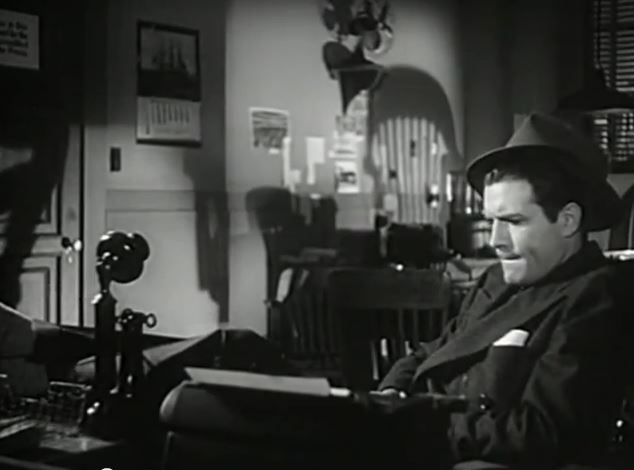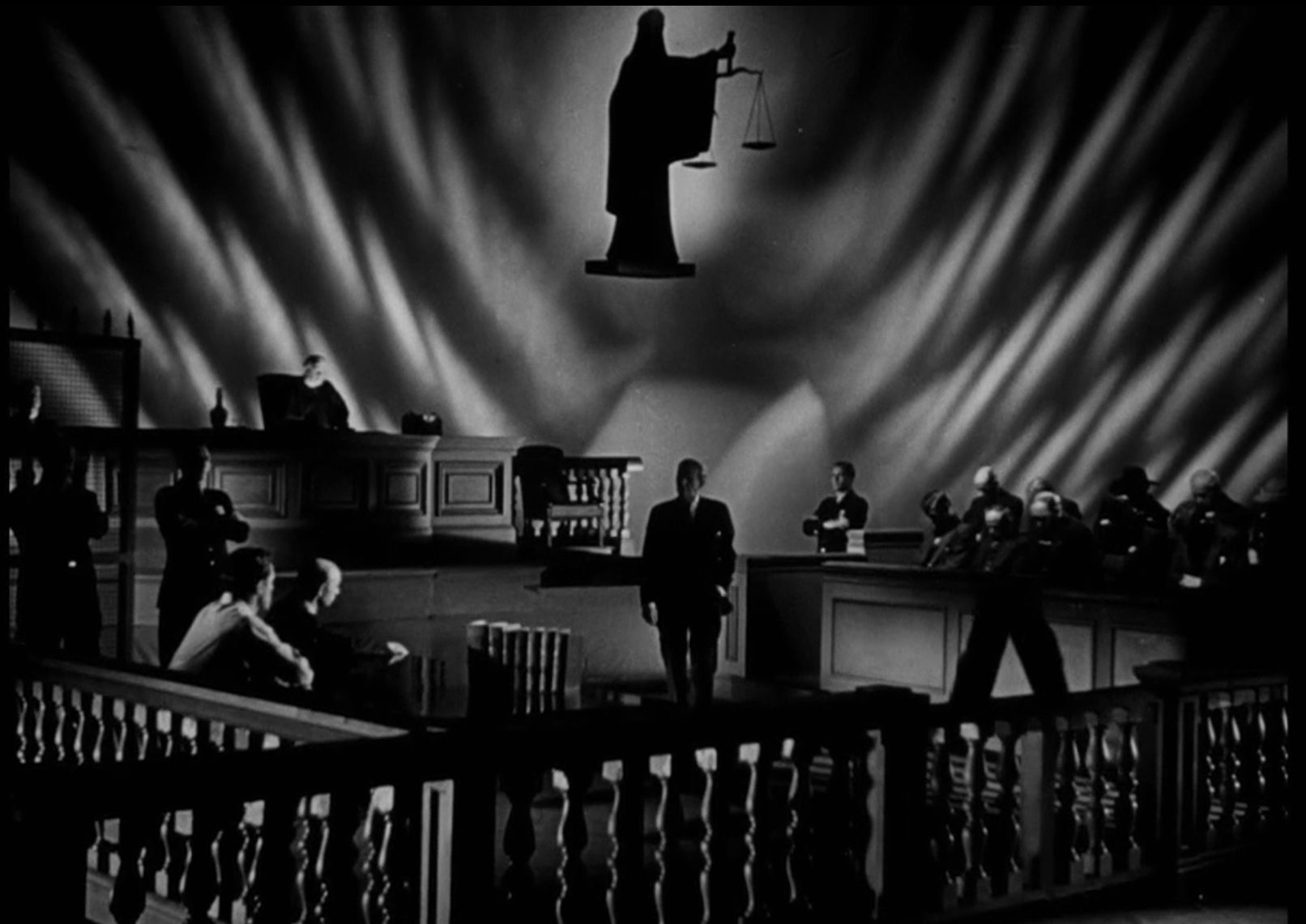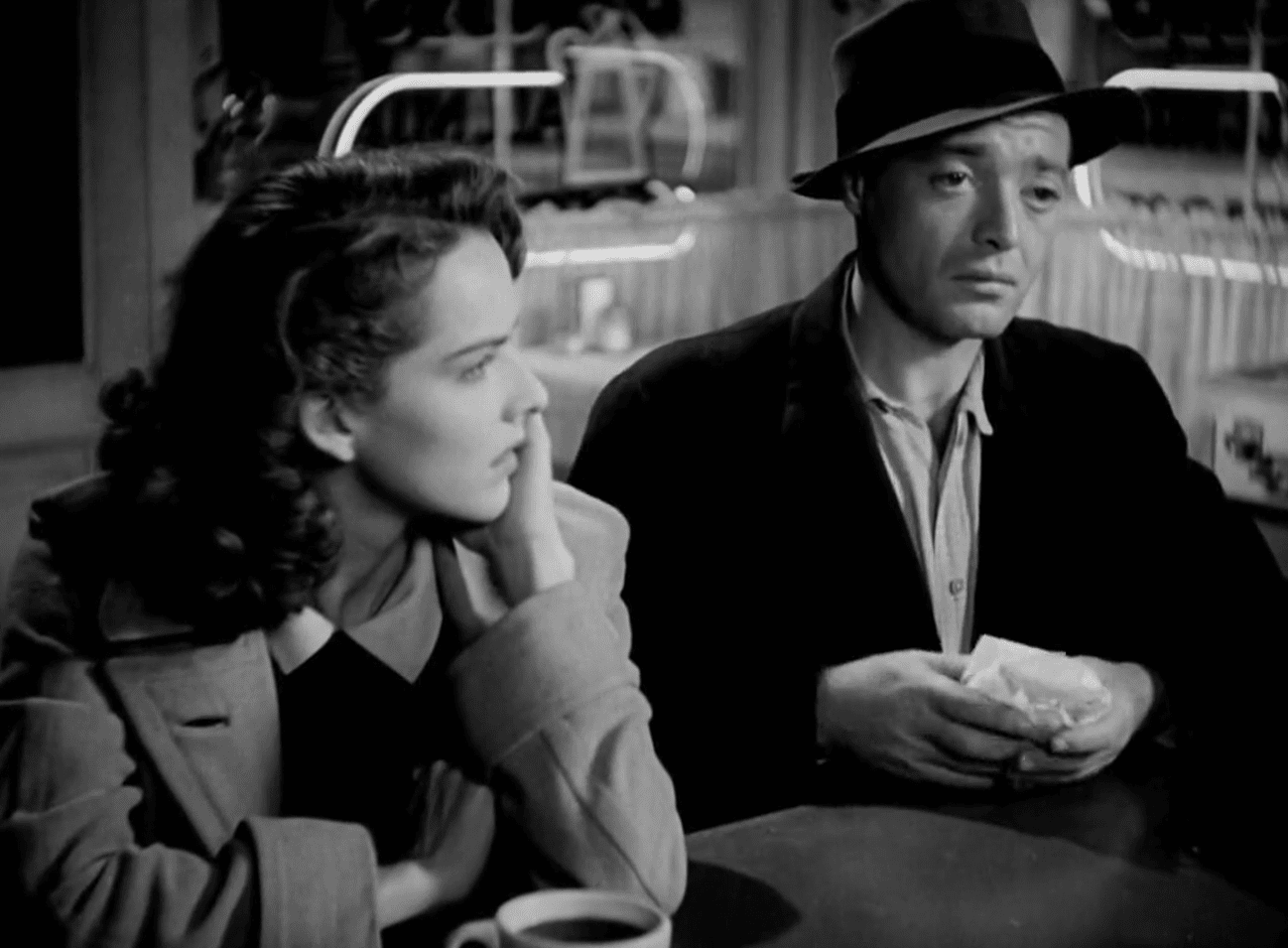While watching The Stranger on the Third Floor, I couldn’t help but think of the old Mark Twain quote, ”In my age, as in my youth, night brings me many a deep remorse. I realize that from the cradle up, I have been like the rest of the race–never quite sane in the night.” It is a noir that understands at its heart that age-old tendency we have when the lights are out, the city is asleep, but our conscious refuses to go to bed.
Cited by film historians as the first film noir, both the film and its director Boris Ingster, a Russian immigrant, are largely forgotten. Like all “firsts,” the actual history is much more complicated and less streamlined. Much like Paul Leni’s 1927 classic The Cat and the Canary, The Stranger on the Third Floor is notable for being a low-budget film that successfully and adroitly pulls from German expressionism to give birth to a new Hollywood genre, the noir.

All the hallmarks are there, the cynicism, shadows cast across the character’s faces, dark alleys, and narration of the inner thoughts of our not-so-heroic hero. It even has a bevy of actors who would become familiar with the genre–such as Peter Lorre, Elisha Cook Jr.
The Stranger on the Third Floor is a not-so-subtle commentary on the horror story that is the American judicial system. Through the lens of the film, the judicial system is an eerie Kafkaesque nightmare from which we can never awaken. It destroys everyone it touches, the innocent as well as the guilty.
The script by Frank Partos and uncredited work by Nathaniel West shows us early on how unconcerned everyone involved with the trial is. The Judge (Oscar O’Shea) seems bored, and the District Attorney (Charles Waldron) has to get the Judge’s attention to wake up a snoring jury member who was up all night with a toothache. Even Joe’s own Defense Attorney (Alec Craig) doesn’t seem all that invested.
Indeed, guilt plays a significant role in Ingster’s debut. A young reporter Mike Ward (John McGuire), has nabbed the story of his career. He’s an eyewitness to a murder scene at the coffee shop across from his apartment. Everything is looking up for Mike; he gets the spotlight, a byline, and the respect of his peers. Plus, he can finally marry Jane (Margaret Tallichet). He didn’t see the murder, but he did see the accused, Joe Briggs (Elisha Cook Jr.), standing over the dead body.
Mike’s fellow journalists sit around the court press room, joking about Joe’s imminent guilty verdict while congratulating Mike on his byline. The fact that Joe’s life hangs on the balance of Mike’s testimony doesn’t bother anyone but Joe and Jane. Mike seems ambivalent at best, believing he’s only telling the truth. It’s not his fault if the jury finds Joe guilty.
But on his way home, Mike begins to think. McGuire’s deadpan voice narrates Mike’s inner thoughts as he walks through the unforgiving urban landscape. The coffee shop where the murder happened is already open, the new owner’s name now painted on the window, Joe’s pleas of his innocence echoing in his ears.
Ingster deftly showcases how the problem with the American Legal system is how people feel like cogs in a machine. The notion of innocent until proven guilty is a myth when society often believes you are guilty until proven innocent. Something that even Mike notices but doesn’t admit until he begins to think it over. At home in his crummy apartment, his snoring next-door neighbor Mister Meng (Charles Halton) keeping him awake, Mike wonders if he made a mistake.
Mike’s paranoid nightmare is the centerpiece of The Stranger on the Third Floor—a nightmare born out of Mike’s guilt and what he witnessed in the courtroom. Just before nodding off, he saw a stranger in his boarding house. Now Mister Meng has stopped snoring. In Mike’s sleep-addled mind, he wonders if the Stranger (Peter Lorre) has killed Mister Meng.
What plays out is nothing short of a masterwork from a first-time director collaborating with a handful of legendary talents. Van Nest Polglase designed the sets for the film, and the sets during the nightmare scenes are a masterwork of working within a budget and using imagery to display a character’s psyche. Polglase was a legend even at the time, having worked on King Kong. Funny enough, Polglase would go on to design the sets of Orson Welles’s iconic Citizen Kane. But in The Stranger on the Third Floor, you can see the beginnings of what Wells would so brilliantly utilize.

The sets dwarf Mike, showing how helpless he is to fight the system. In the interrogation scene, where cops surround him, Nicholas Musuraca’s camera is at an extremely low angle, making him seem trapped and adding to the feeling of it all being a horrible dream.
Polglase sets range from feeling lived into being evocative dreamscapes. Mike’s apartment feels more like an actual apartment than we usually see in films, the claustrophobia adding to his tormented psyche. The spiral staircase, another staple of the genre, feels natural, but both Poglase’s design and Musuraca’s lighting give the stairs a haunted feeling as if it was taken from the noir’s close cousins, the old dark house genre.
However, Partos and West’s script drops the ball. We soon discover that Mister Meng is dead, likely killed by Lorre’s Stranger. Mike is conflicted, still haunted by his nightmare; he hesitates to call the police, fearing he will suffer a fate like Joe’s. But, of course, the implication is that he realizes Joe is innocent and Mike has most likely killed him.
But Jane talks Mike into reporting Meng’s death. Quickly the authorities suspect Mike of the murder. He’s the next-door neighbor, and the idea of a mysterious stranger with bulging eyes, a funny voice, and a white silk scarf seems a bit far-fetched. Except neither the script nor Ingster ever really show the scenes being played out from his dreams for real. Instead, the narrative focuses on Jane as she tries to find the Stranger and exonerate her man.
Ingster and Musuraca’s lighting cast shadows over the corners of the room, creating bars across the character’s faces; trapped by their thoughts and beliefs, there is no escape for them from their actions. However, they choose bright lights during the daytime, giving a sense of optimism and cleverly showing how things often look more promising in the cold light of day.
The Stranger on the Third Floor is barely over an hour long, and one gets the sense they didn’t want to rehash the nightmare scenario in the cold light of day. Again, understandable, and there’s considerable tension as Mike talks to the Judge, and we can begin to feel that his nightmare is more prophetic than a fever dream. But these scenes, despite the built-in tension, don’t feel as immediate or as compelling. Partially due to the script feeling a little undercooked but also because despite a fantastic square-jawed face McGurire’s presence isn’t that interesting when put in real-world scenarios.
Still, Partos and West’s script adds a touch of dark humor to Lorre’s turn as the Stranger. “The only person who was ever kind tome, was a woman. She’s dead now.” He plays the disturbed man with an unsettling sympathy, much like he played the child killer in Fritz Lang’s 1931 M.
As Jane interrogates Lorre, it becomes apparent that he is deranged and has been tortured by the people who are supposed to help him. Lorre’s face inspires unease, but with Lorre, there is always a sense that he is uneasy. The contradiction of the monster who feels monstrous is part of the reason directors like Lang, Hitchcock, Houston, Curtiz, and others used him. His face was memorable, but the tortured soul underneath made Lorre as a performer, so compelling, with the hint of humanity that broke your heart while giving you chills.
Tallichet’s Jane is woefully underwritten. But Ingster and Tallichet find ways to hint at a more profound moral resolve. She’s the voice of reason but also the one who discovers Lorre’s Stranger and even befriends him to try and convince Lorre to turn himself in. Tallichet, in this one scene, shows a talent equal to Lorre at expressing conflicting emotions beneath the surface, and it’s a shame the script can never really figure out what to do with her.

Ironically Ingster would only direct a few more movies before settling on a career as a producer for television and serials, most notably, a little show called “The Man From U.N.C.L.E.” For a movie considered the first, there’s something oddly complete about The Stranger on the Third Floor. Even from a director’s standpoint, the film feels like something from a silent filmmaker, experimenting with the form.
This may be because Ingster worked with the pioneering and foundational Russian director Sergi Einstein. It becomes evident when you see how Ingster and his editor Harry Marker weave the expressionistic images of Mike’s psyche together. Or how Ingster ties Polglase’s expressionist production designs with Musuraca’s surrealistic camera, while Roy Webb’s anxious score plays over it all, is impressive for any director, much less a first-timer.
The Stranger on the Third Floor flopped and was savaged by the critics of the time. Accused by critics of being pretentious and derivative, the film somehow spawned a genre while fading into obscurity. Yet, in addition to all this, Ingster speaks to the human condition of letting intrusive thoughts ruin a good night’s sleep.
Perhaps nothing sums up The Stranger on the Third Floor better than a single image from Mike’s nightmare. The image of the judge turning into the statute of lady justice, the scales in one hand and a scythe in the other. The film’s tragic fate as a historical footnote is matched by how boldly it displays an immigrant’s anxieties about an indifferent and cruel justice system.
Images courtesy of RKO Radio Pictures
Have strong thoughts about this piece you need to share? Or maybe there’s something else on your mind you’re wanting to talk about with fellow Fandomentals? Head on over to our Community server to join in the conversation!

